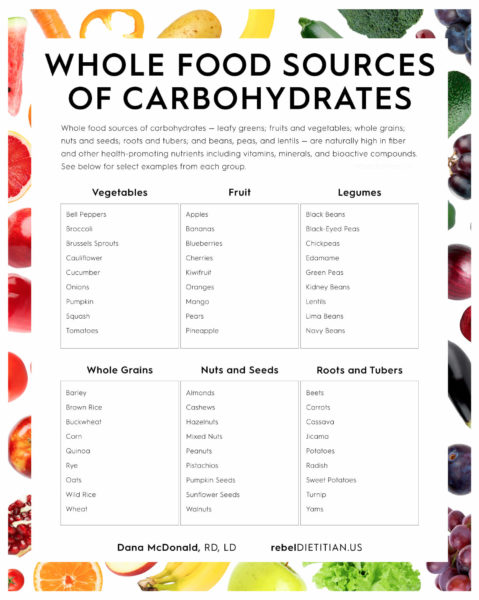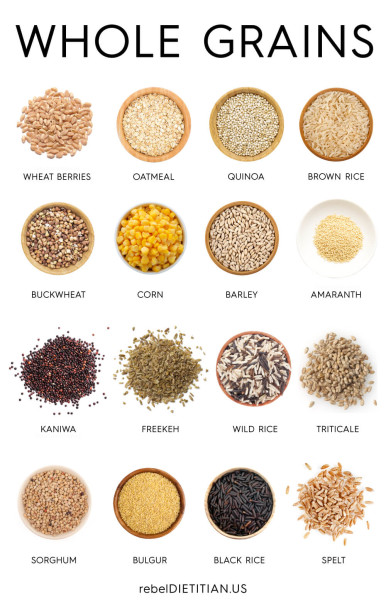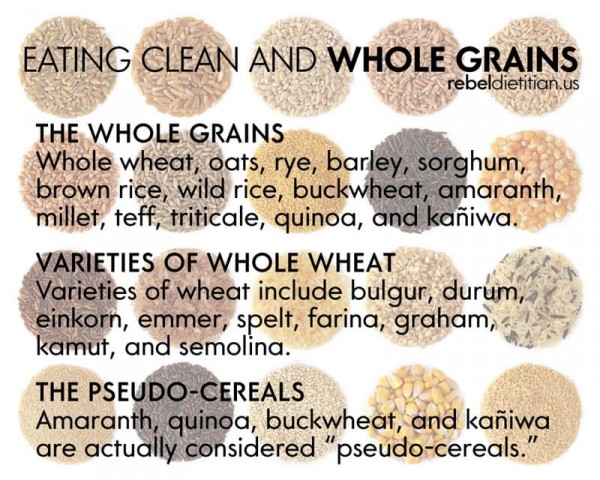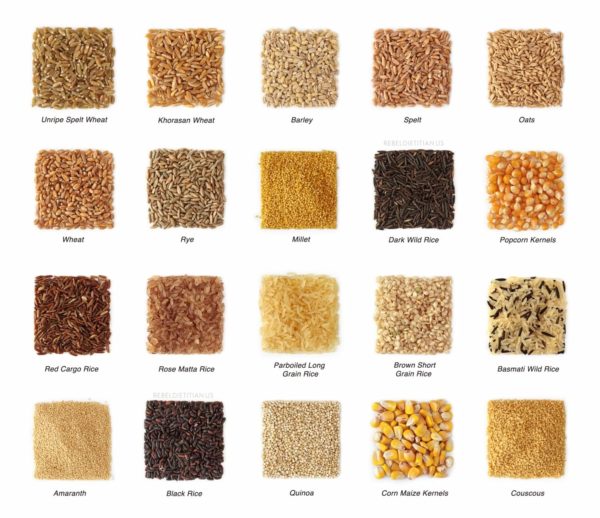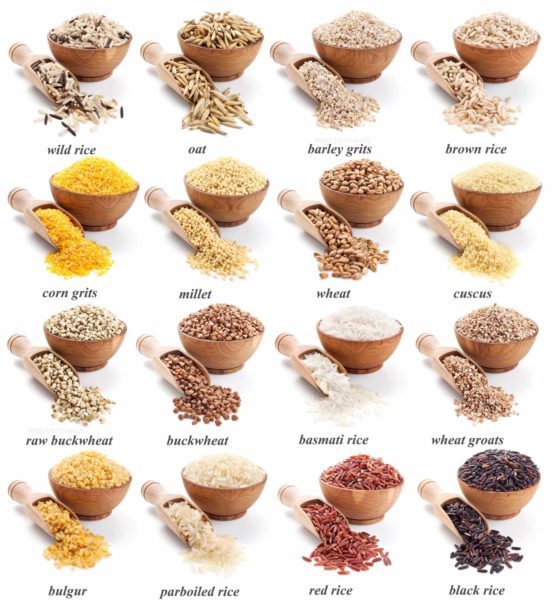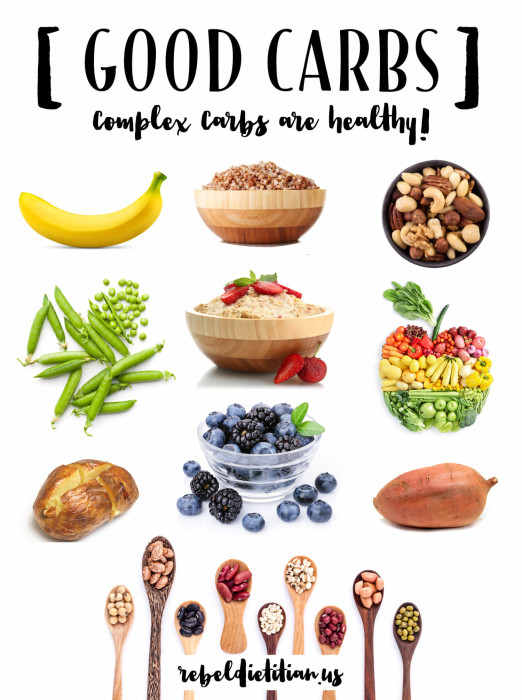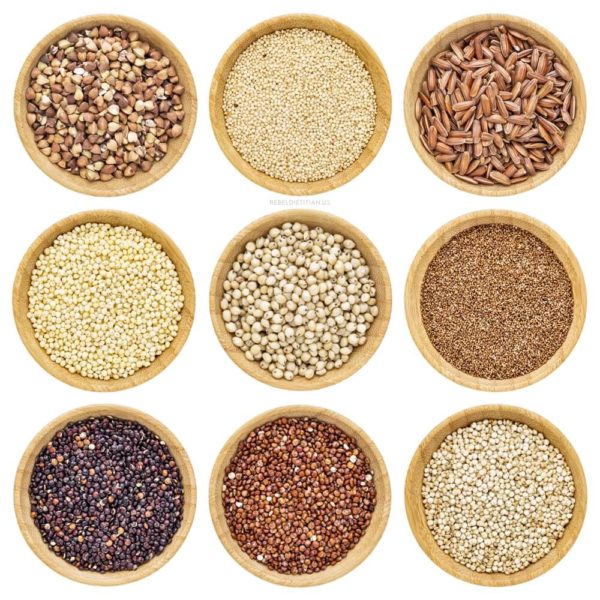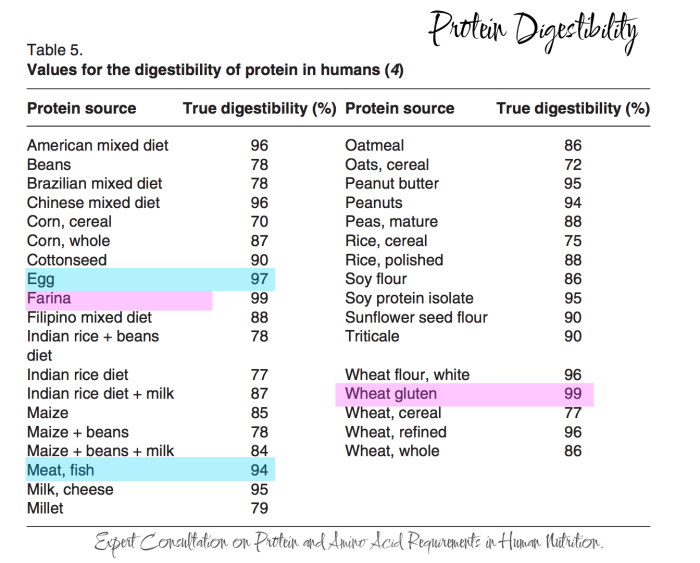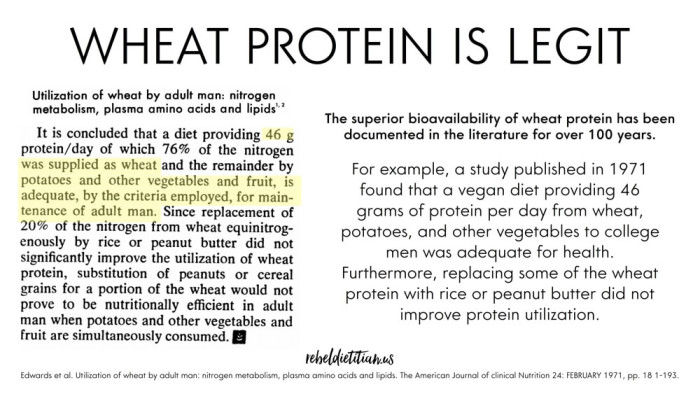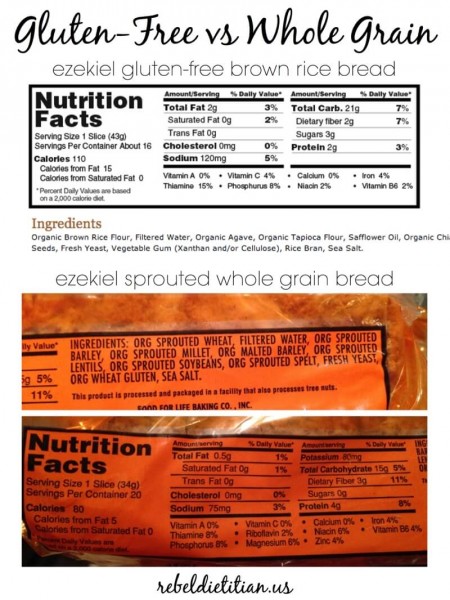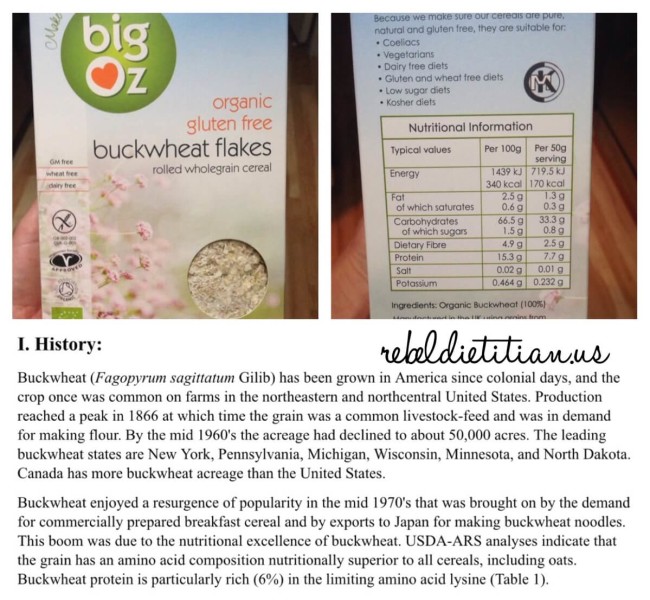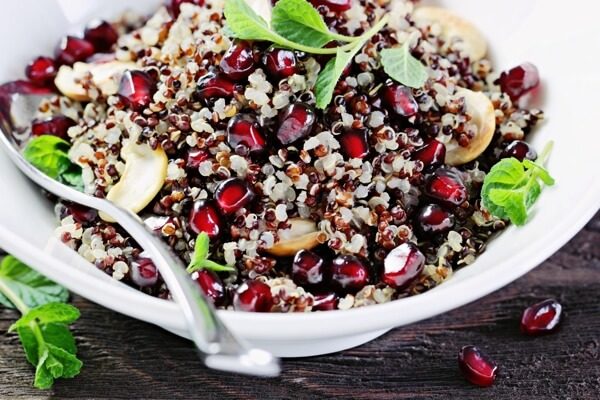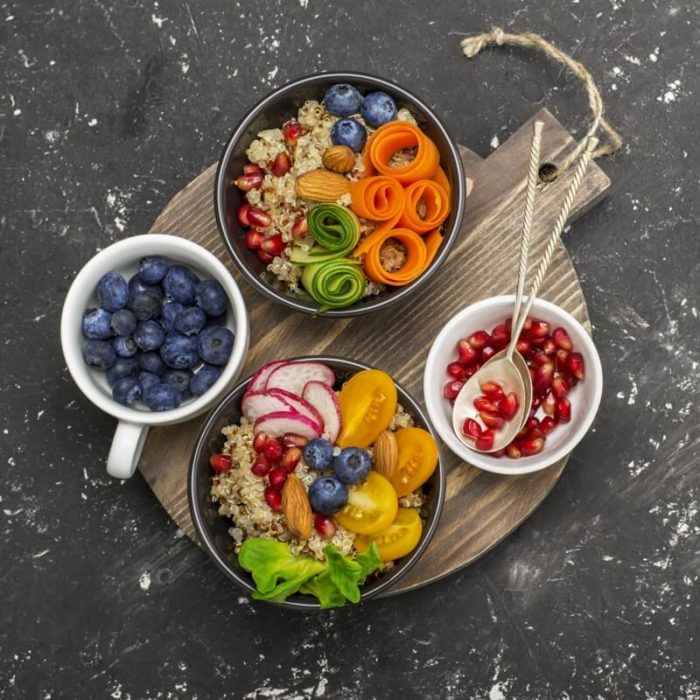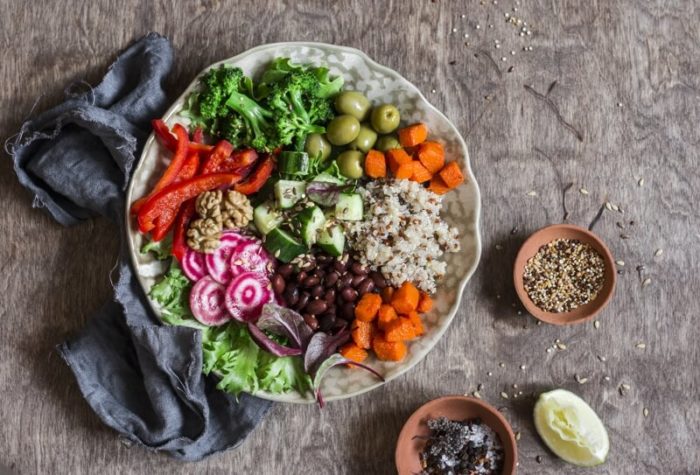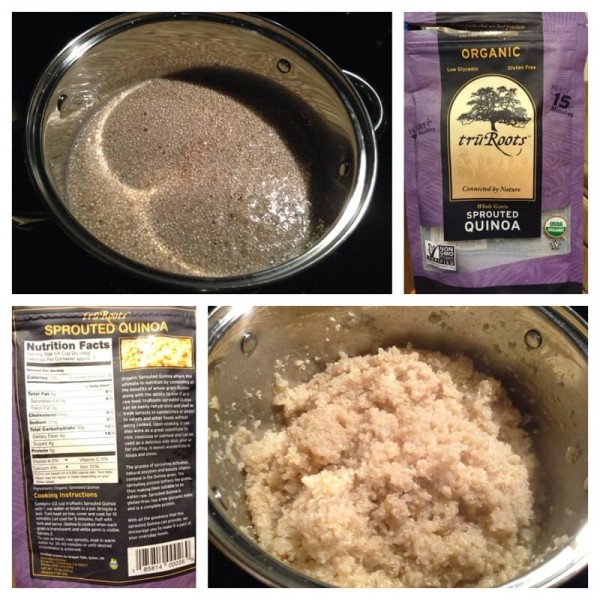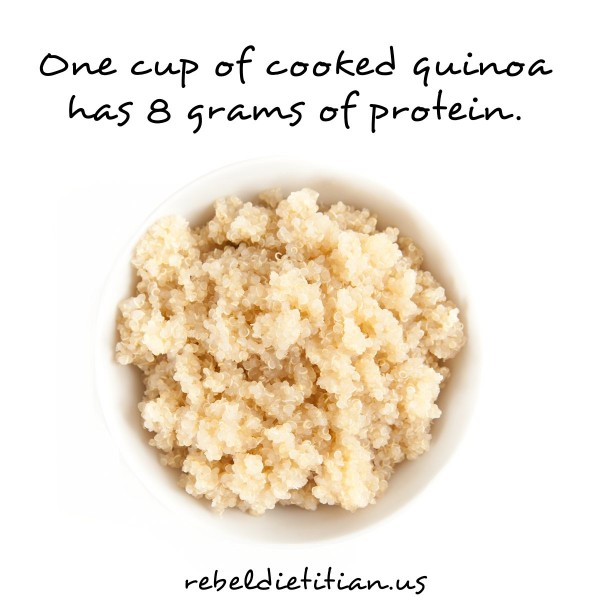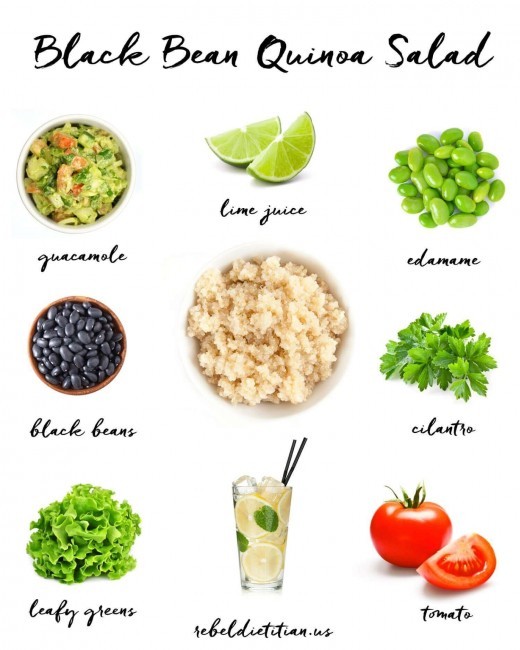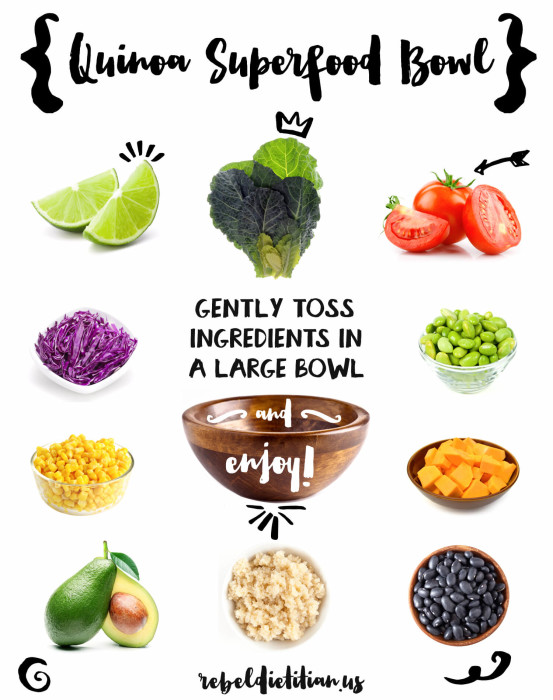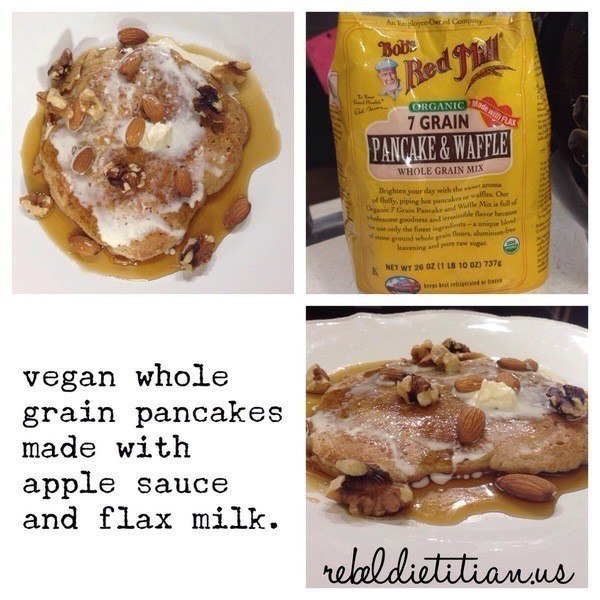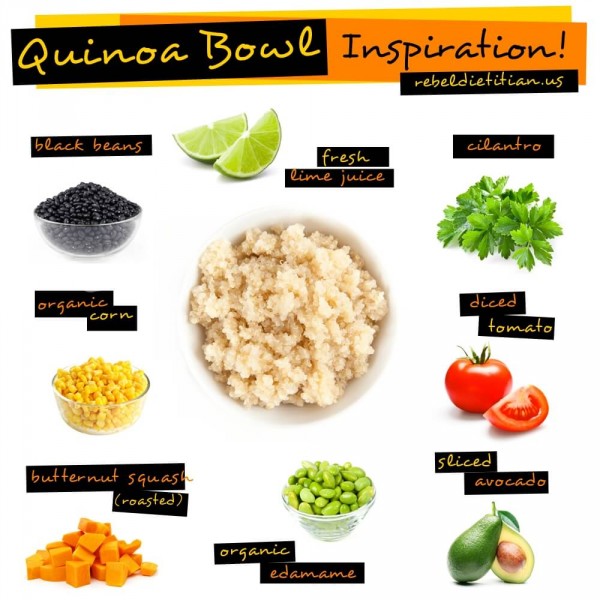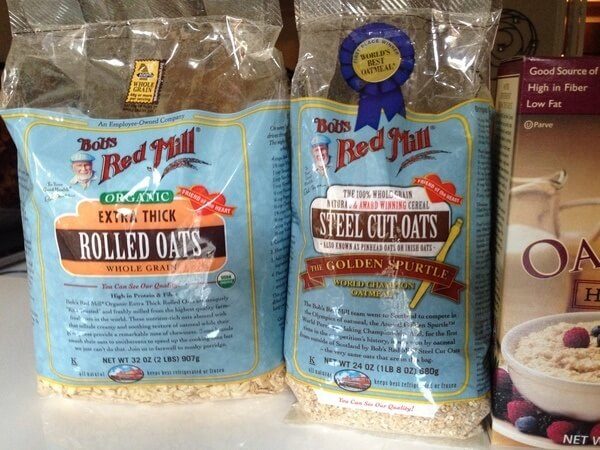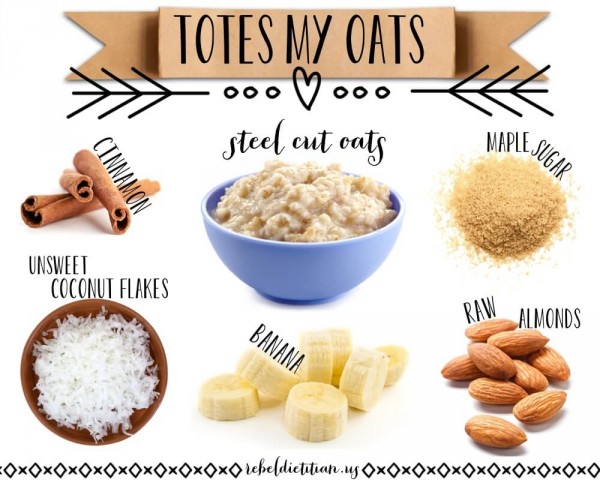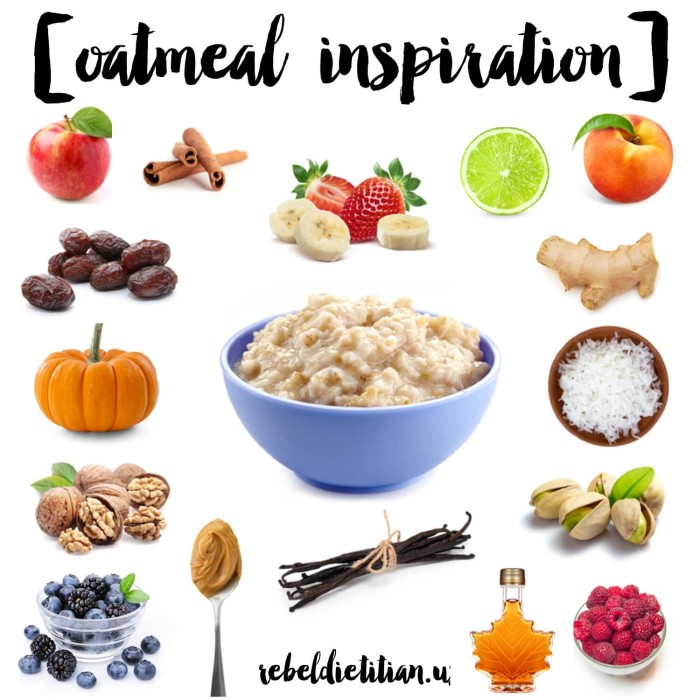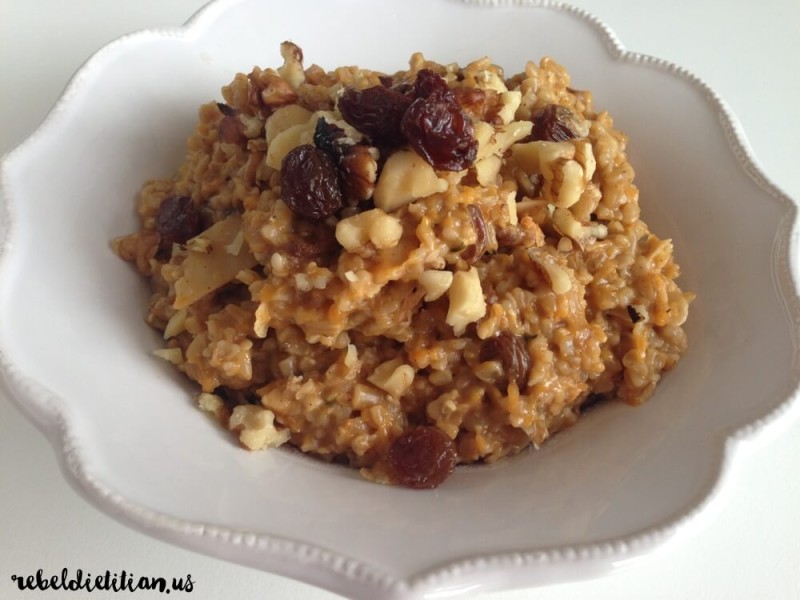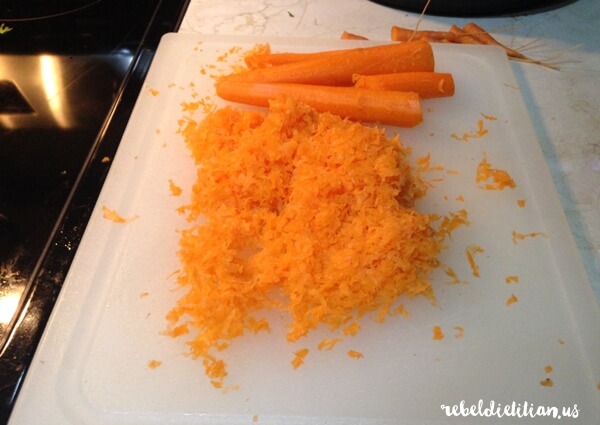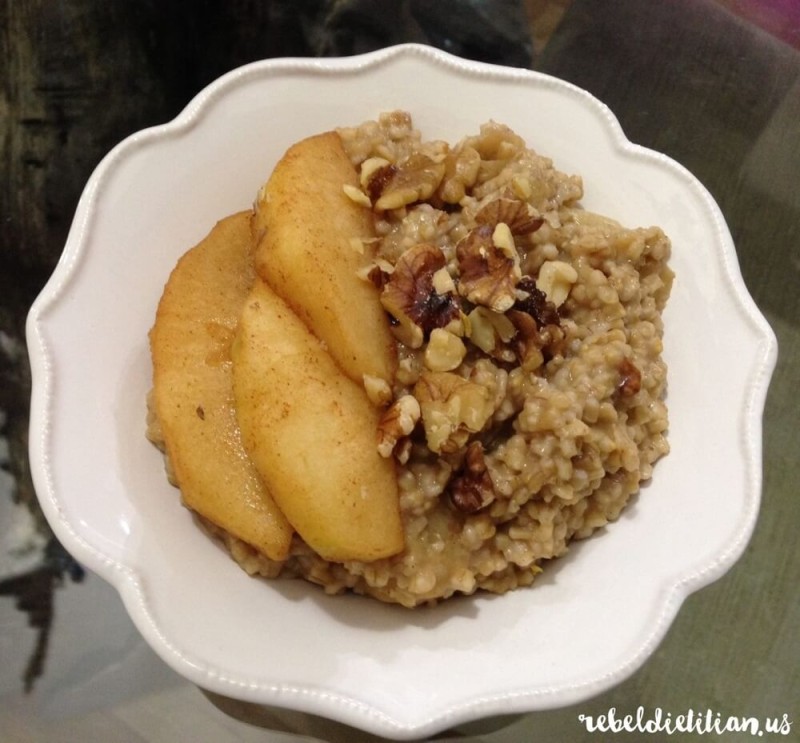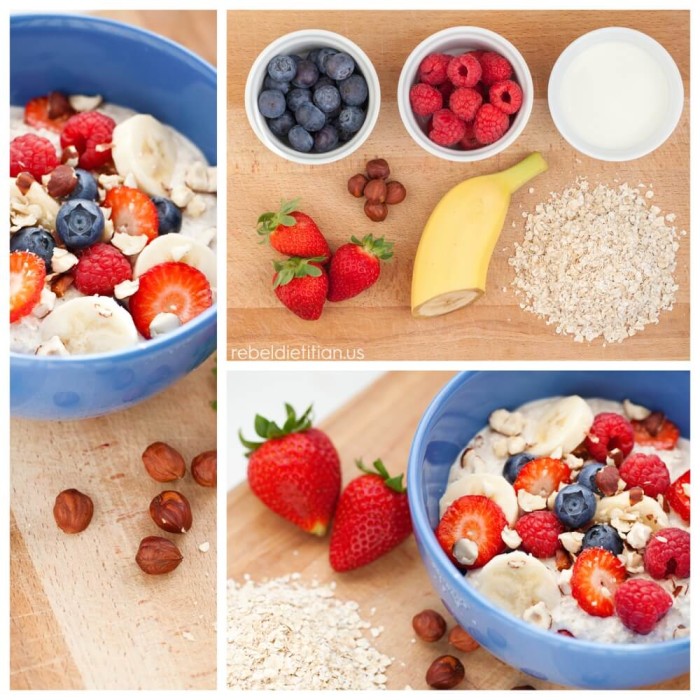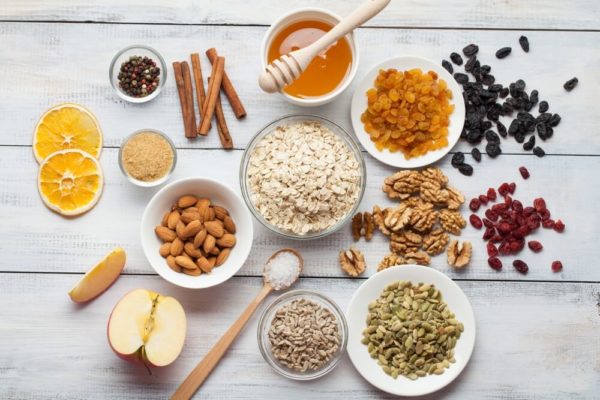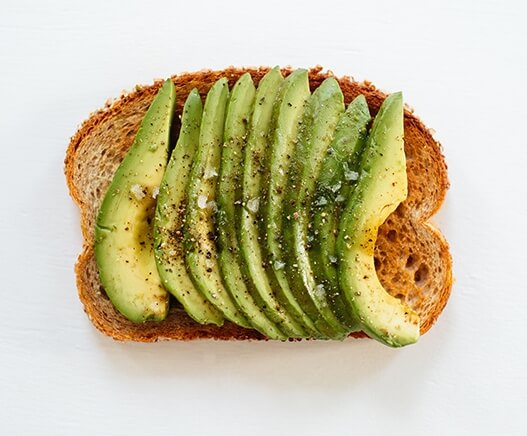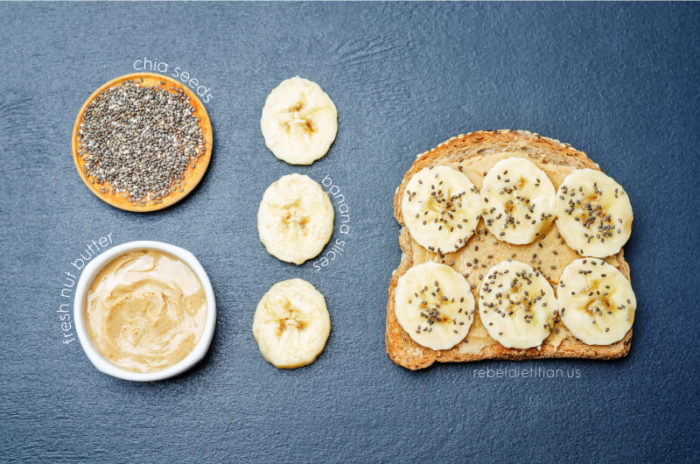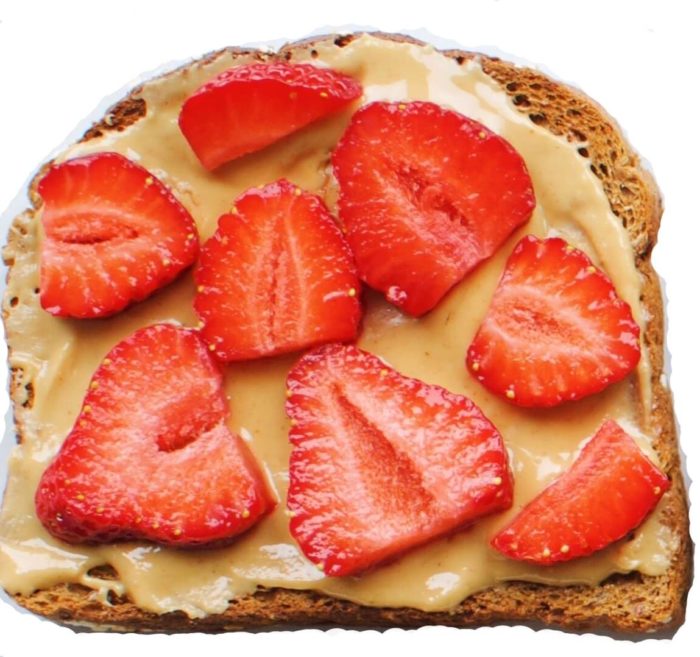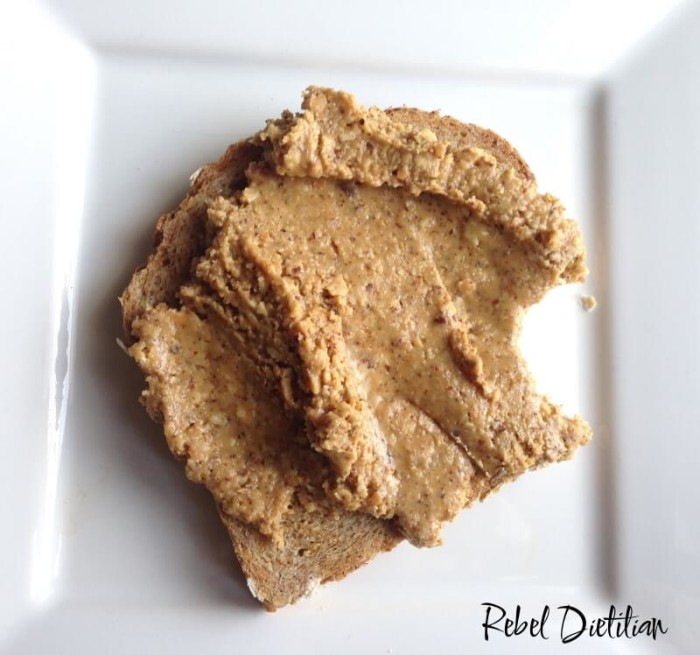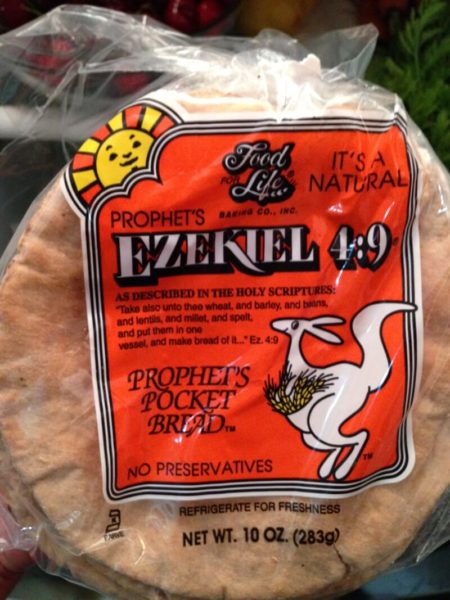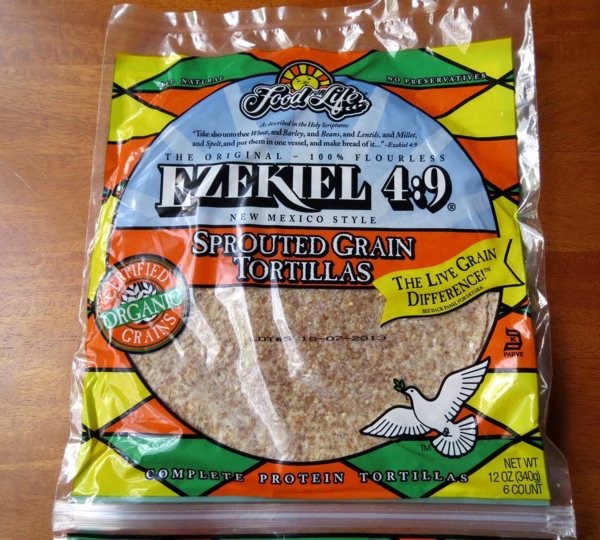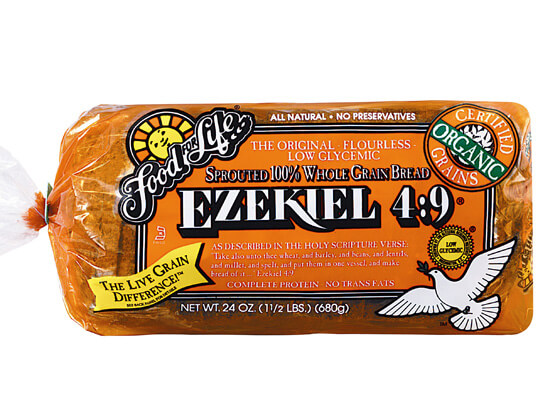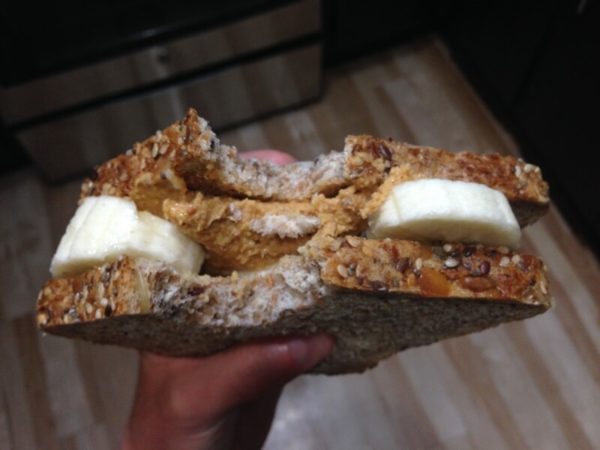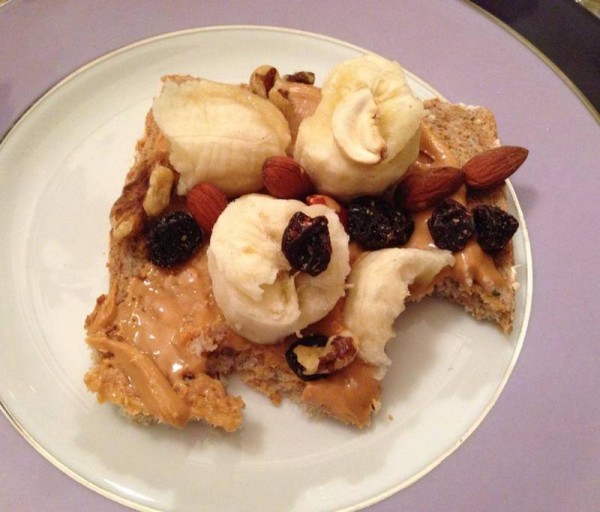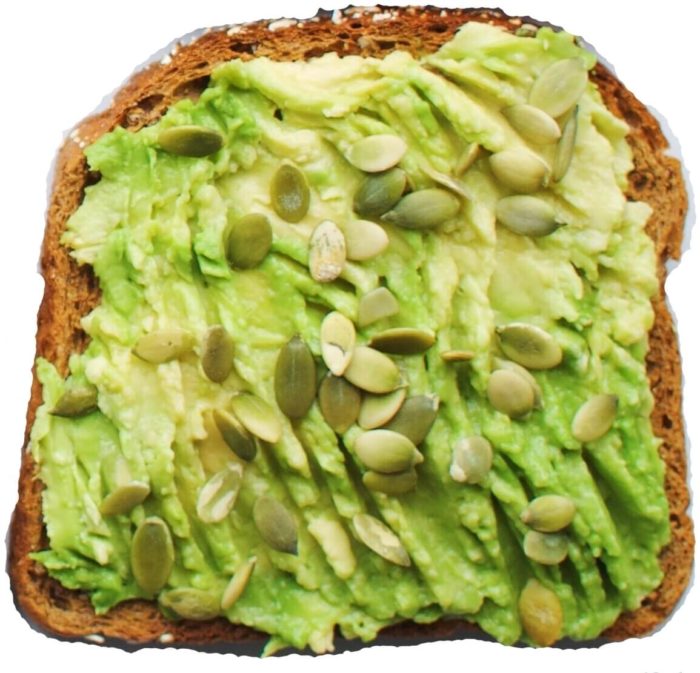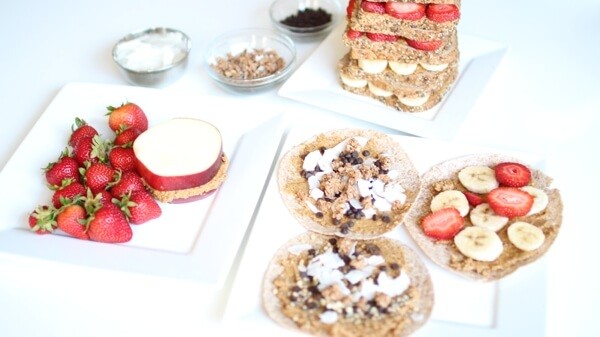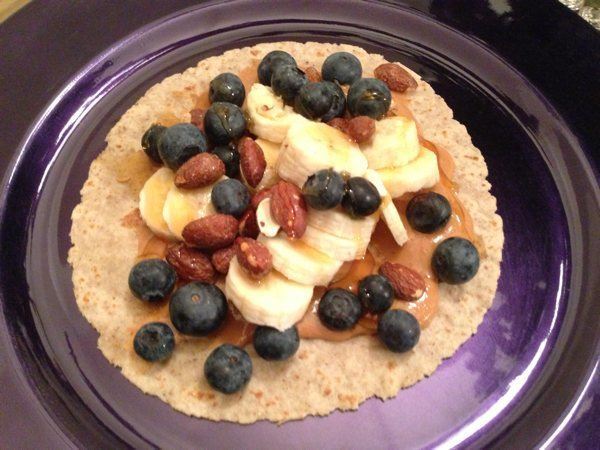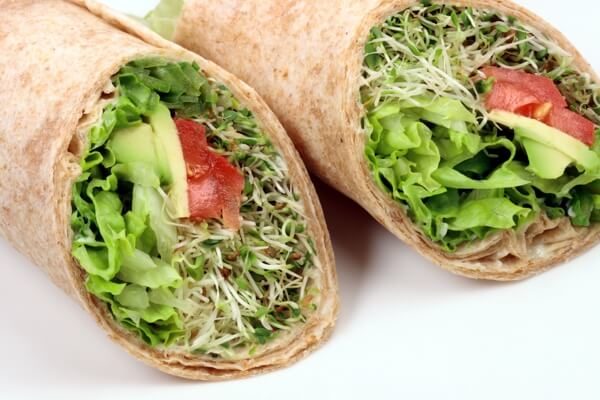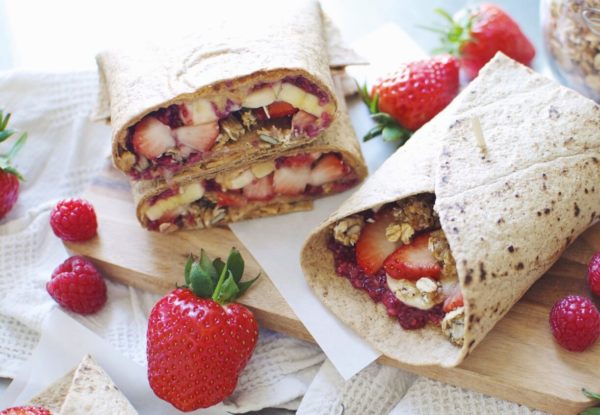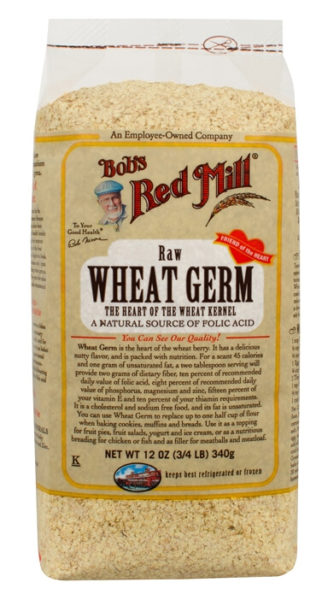Increased intake of whole grains is associated with a lower risk of heart disease, obesity, type 2 diabetes, and even cancer (source). Most individuals are aware of the health-promoting benefits of fresh fruits and vegetables including phytochemicals and antioxidants; however, most individuals are largely aware of the fact that 100% whole grains also deliver many of the same powerful health benefits. As always, towards the bottom of this page you will find a photo gallery containing additional whole grain resources (e.g., posters and charts).
Whole Grains
- Examples of whole grains include whole wheat, barley, rye, triticale, oats, sorghum, brown rice, wild rice, buckwheat, amaranth, corn, millet, teff, quinoa, and kañiwa.
- Quinoa, amaranth, and kañiwa are considered pseudo-cereals.
- Examples of whole wheat include wheat berries, freekeh, bulgur, durum, einkorn, emmer, spelt, farina, graham, kamut, and semolina.
Whole Wheat
I commonly hear people use the terms “whole grain” and “whole wheat” interchangeably and this is inaccurate. Whole wheat is a type of whole grain, but there are a lot of different whole grains (e.g., brown rice, quinoa, and buckwheat). Whole wheat falls under the food group whole grains (just like carrots fall under the food group fruits and vegetables).
When it comes to nutrition, this fact may also surprise you — whole wheat doesn’t cause grain brain. Its actually a nutrient powerhouse and gluten? Gluten, the protein found in certain whole grains (including whole wheat), has a digestibility value that is higher than both egg and fish (source).
Towards the bottom of this page you’ll find a photo gallery that contains a chart that provides the protein digestibility values of different foods (the source of the screenshot is a joint report written by the World Health Organization (WHO), Food and Agriculture Organization of the United Nations (FAO), and United Nations University (UNU)).
Gluten
Gluten is the protein found in some whole grains. In general, whole grain products (e.g., whole grain bread) are far more nutrient-dense than gluten-free products. Most gluten-free products are ultra-processed and refined (e.g., made from corn and potato flour). If you have an intolerance to gluten, it would be best to stick with 100% whole grains that are naturally gluten-free rather than consuming ultra-processed corn and potato products.
In the photo gallery below, I include a poster that compares the ingredients and nutrition content of Food for Life’s gluten-free vs whole grain bread. As you will see, the gluten-free bread is higher in carbohydrates, added sugar, and salt, while lower in protein. Not to mention, contains a variety of different ultra-processed food ingredients (e.g., agave syrup and “vegetable gum”). My point is, unless you have Celiac disease or a documented intolerance to gluten, gluten-free products provide little — if any — nutritional benefit.
- The gluten-free grains include sorghum, brown rice, corn, wild rice, buckwheat, amaranth, millet, teff, quinoa, oats, and kañiwa.
- Oats are also inherently gluten-free, but they are frequently contaminated with wheat during growing or processing.
- Bob’s Red Mill sells multiple gluten-free oat products.
Buckwheat
Buckwheat is another nutritional powerhouse. According to Purdue University, buckwheat has an amino acid composition that is nutritionally superior to all cereals, including oats. Buckwheat protein is particularly rich (6%) in the limiting amino acid lysine. Buckwheat can be consumed as groats or flakes (shown below). Buckwheat groats are prepared much like steel cut oats.
Whole Grain Tips
- Choose minimally processed whole grains (e.g., brown rice, quinoa, wheat berries, and rolled oats) without added sugar, salt, or fat.
- Soaking whole grains increases nutrient bioavailability.
- Avoid ultra-processed and refined grain products (e.g., instant oatmeal, breakfast bars, sugary cereal, and white bread).
- Ignore front-of-label claims (e.g., “made with whole grains”) and read the ingredient list. If the first ingredient isn’t one of the whole grains or the product contains more than 10-15 ingredients, put it back.
- Most ready-to-eat products that contain grains are ultra-processed and refined.
- Experiment with ancient whole grains. For example, farro, spelt, teff, amaranth, kamut, freekeh, and buckwheat.
- Consider substituting processed grains like white rice or pasta with heartier grains like quinoa, wheat berries, and brown rice in your favorite dishes (e.g. soups, casseroles, and burritos).
- Enjoy different grains for breakfast. One of my favorite superfood breakfast bowls includes wheat berries prepared with cinnamon, vanilla, maple syrup, and non-dairy milk. Quinoa also makes a hearty breakfast porridge.
- Avoid gluten-free products unless they are medically necessary (e.g., Celiac disease or documented gluten intolerance) as these products are nutritional inferior to products made from 100% whole grains.
- You can view examples of the whole grains I enjoy eating by visiting the page titled Rebel Grub.
Quinoa
Quinoa is one of nature’s superfoods. This ancient grain is high protein and low carbohydrate, versatile and quick to cook with a light, fluffy, and friendly flavor. Quinoa (pronounced KEEN-wah, not kwin-OH-a) is considered a gluten-free whole grain; however, it is not technically a (cereal) grain at all, but is instead what we call a “pseudo-cereal” – our name for foods that are cooked and eaten like grains and have a similar nutrient profile. Botanically, quinoa is related to beets, chard and spinach, and in fact the leaves can be eaten as well as the grains.
Quinoa has an usually high ratio of protein to carbohydrate, since the germ makes up about 60% of the grain. For comparison, wheat germ comprises less than 3% of a wheat kernel. Quinoa is also highest of all the whole grains in potassium, which helps control blood pressure. Sprouting quinoa increases vitamin content and activates natural enzymes.
Cooking Quinoa
This tiny seed is one nature’s most healthful and rejuvenating foods – delightfully fluffy and moist. Cooking quinoa is super easy. Quinoa grows with a bitter, protective coating called saponin that is, luckily, easily rinsed off. Most of the quinoa sold today in supermarkets is pre-rinsed, although a quick rinse under the faucet never hurts.
Directions
Place quinoa in a fine-mesh sieve and run it under cold water for a few seconds. Shake off any excess water and you are ready to proceed with cooking. Next add water to a medium pot and bring to a boil. Add in quinoa, cover, reduce heat to medium low, and then simmer until water is absorbed, 15 to 20 minutes. Set aside off the heat for 5 minutes; uncover and fluff with a fork. Done!
Preparation
The best thing about quinoa is its versatility. Quinoa can be substituted for other grains and flours (e.g., baked goods), rice, couscous, pasta, or oatmeal.. and can also be used as a side dish, pilaf for stuffing, or a base for soups and stews. The ingredients you can mix with quinoa are also endless.
Whole Grain Recipes
Nutty Coconut Quinoa
Servings: 3 to 4
Ingredients:
- 2 cups quinoa, cooked
- 4 medjool dates, chopped finely
- 1/2 teaspoon pure vanilla
- 1 teaspoon cinnamon, ground
- 2 tablespoons sunflower seeds
- 2 tablespoons almonds, chopped
- 2 tablespoons walnuts, chopped
- 2 tablespoons pistachio seeds
- 1/3 cup unsweetened coconut flakes
- 1/2 – 1 cup coconut milk, unsweetened
Directions:
- In a large bowl gently toss cooked quinoa with coconut milk, vanilla, chopped medjool dates, and cinnamon.
- Next, layer on chopped almonds, chopped walnuts, pistachios, and sunflower seeds.
- Last, sprinkle on unsweetened coconut flakes.
- Serve and enjoy!
Back to Nature Muesli
Servings: 2 – 3
Ingredients:
- 1 cup extra thick rolled oats
- 2 tablespoons hulled hemp seeds
- 2 tablespoons sunflower seeds
- 2 tablespoons almonds, chopped
- 2 tablespoons walnuts, chopped
- 2 tablespoons pistachios
- 2 tablespoons raisins, unsweetened
- 2 tablespoons unsweetened coconut flakes
- 1/2 teaspoon cinnamon, ground
- 1 tablespoon granulated maple sugar
- 1 cup non-dairy milk
- 1/2 banana, sliced (optional)
Directions:
- In a medium bowl, gently toss extra thick rolled oats, hulled hemp seeds, sunflower seeds, almonds, walnuts, raisins, cinnamon, granulated maple sugar, and unsweetened coconut flakes.
- Serve with non-dairy milk and fresh banana slices (optional).
- Store extra dry muesli in an airtight container in the refrigerator for up to 3 to 5 days.
Cinnamon Almond Muesli
Servings: 2 – 3
Ingredients:
- 1 cup extra thick rolled oats
- 2 tablespoons walnuts, chopped
- 2 tablespoons almonds, chopped
- 2 tablespoons unsweetened coconut flakes
- 2 tablespoons raisins
- 1 tablespoon granulated maple sugar
- 1/4 teaspoon cinnamon, ground
- 1 cup non-dairy milk
- 1/3 cup fresh blueberries (optional).
Directions:
- In a medium bowl, gently toss extra thick rolled oats, walnuts, almonds, unsweetened coconut flakes, raisins, maple sugar, and cinnamon.
- Serve muesli with non-dairy milk and fresh blueberries (optional).
- Store extra dry muesli in an airtight container in the refrigerator for up to 3 to 5 days.
Learn More
Rebel Lifestyle
To learn more about my lifestyle, visit the page titled Rebel Lifestyle.
Rebel Grub
To view photos of my grub, check out the page titled Rebel Grub.
Meal Planning
To view meal planning information, head over to the page Meal Planning.
Shopping Lists
To view shopping lists, visit the page titled Shopping Lists.
Posters and Charts
To view my posters and charts, hit up the page titled Posters.
Pinterest and Facebook
Posters and Charts
Except where otherwise noted, content on this site is licensed under a CC BY-NC-ND 4.0 license. This means you are free to use my work for personal use (e.g., save the file to your computer or share via social media) as long as you do not modify the image or use the image for commercial purposes ($).
 Rebel Dietitian Dana McDonald, RD
Rebel Dietitian Dana McDonald, RD 